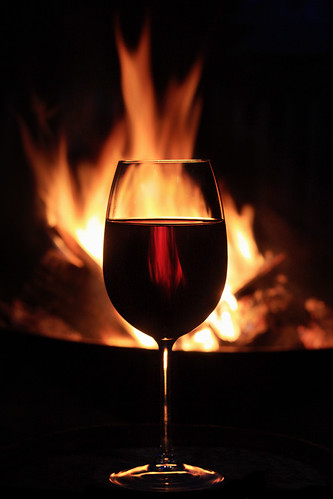
Red Wine, by gfpeck on Flickr, CC BY-ND 2.0.
Just as clothes don’t really make the man, fine glassware doesn’t make a quality wine… or does it? Good wine can stand on its own, but connoisseurs know that wine can convey different qualities depending of the glass in which it’s served: it’s structure, size, and thickness (or rather, fineness) of the crystal, make a whole that will enhance – or detract – its nuances of aroma and flavor.
To begin with, good crystal is a must (unembellished – those fancy cut glasses that were a wedding present from one’s dear auntie are best left on the sideboard). Some brands offer glasses specifically designed to highlight the unique characteristics of each varietal and region, but in general terms, white wines benefit from smaller, more elongated bowls that showcase its crispness and aromas, while bigger bowls are better for reds, so that the wine has room to breathe and become mellower.
White wines: these medium sized glasses must preserve the cooler temps required by these wines and emphasize their fruit, which makes them also suitable for rosés. The most common white wine glass is the Chardonnay glass, with a slightly bulbous bowl and a narrower opening, in order to concentrate the aromas and appreciate the balance of fruit and acidity.
For red wines, the two most common glasses are the Burgundy glass, tall and tulip-shaped, for big and heavy full-bodied wines, and the Bordeaux glass, more rounded and roomy, whose shape concentrates the aromas of fruit, and encourages oxigenation and smoothing of younger reds that are high in tannin.
Sherry glass: the classic glass for fortified wines, and sweet / dessert wines.
Sparkling wine drinkers have two options: the tulip, preferred for the best Champagnes because of its tall body with a gently rounded bowl, which shows the bubbling to full advantage, while its narrower rim allows concentrates its aromas; or the flute, whose shape directs the bubbles towards the tip of the tongue, and is recommended for more neutral sparkling wines.

Champagne Flutes, by Dinner Series on Flickr, CC BY 2.0.
Whatever you do, don’t waste good champagne pouring it in a ‘coupe’! The wide and shallow coupe glass, supposedly modeled after the breasts of a number of aristocratic French dames of the 18th century (not true, but still entertaining – this type of glass was designed a century before in England), as it lets the wine warm sooner and allows those beautiful bubbles to escape (in spite of those who say that’s a sign you’re taking much too long to sip your bubbly); nowadays it is best left for serving palate-cleanser sherbets.
Caring for your stemware
It is best to wash wineglasses with very warm water and one or two spoonfuls of baking soda, vinegar, or bleach, rather than using conventional dishwashers and detergents; those products, besides dulling the sparkle of your fine stemware, always leave residues and artificial fragrances that, when absorbed by crystal’s porous surface, will alter the aromas and flavors of wine served next time (plus, the film left by dishwashers on glassware may diminish the bubbling of sparkling wines). Once rinsed, dry carefully with a soft lint-free cotton cloth.
Read this post in Spanish: A través del cristal: un vistazo a las copas de vino.
